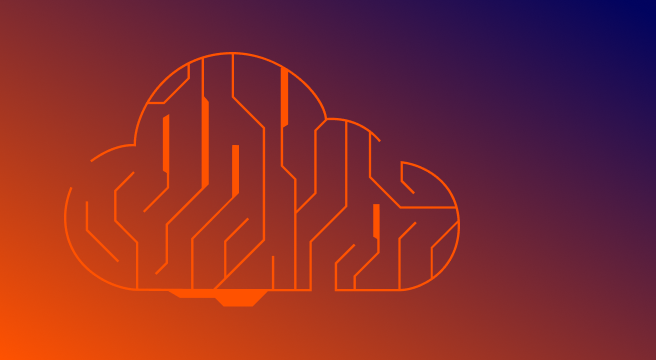Key components of identity and access management (IAM)
Last updated | August 18, 2025 |
Authentication, authorization, user lifecycle management and role-based access control
These four foundational components work together to verify identity, enforce least privilege and simplify access across your cloud and on-prem environments.
Expose key concepts
- What are the key components of identity and access management (IAM)?
- 1. Authentication: Verify users before granting access
- 2. Authorization: Enforce the right level of access
- 3. User management: Maintain identities across their lifecycle
- 4. Role management: Simplify permissions through automation
- Using privileged access management (PAM) to secure high-level permissions
- Using identity governance and administration (IGA) to enforce accountability
- IAM's role in exposure management and breach prevention
- IAM components FAQ
- IAM resources
- IAM products
What are the key components of identity and access management (IAM)?
Identity and access management (IAM) controls who accesses your systems, apps and data, and enforces authentication policies across your enterprise.
To build an effective IAM strategy, you must understand IAM components and how they work together.
In this IAM guide, learn about the four key components of IAM to help you reduce risk, improve compliance and keep attackers out.
1. Authentication: Verify users before granting access
Authentication is the process of validating user identities. It typically starts with a username and password, but stronger IAM solutions add multiple verification layers.
With multi-factor authentication (MFA), users must confirm their identity using two or more different factors, like a password and a security token or a passcode and a biometric.
Adaptive authentication goes further. It analyzes context, such as a user’s IP address or login location and adjusts verification requirements on the fly.
For example, with adaptive authentication, if your users log in from a known device and location, they’ll pass through quickly. If they log in from an unusual location at an atypical time, your IAM tool may require additional authentication or block the user’s access entirely.
Learn how Tenable Identity Exposure uses behavioral baselines and real-time risk scoring to detect identity anomalies and prevent breaches.
2. Authorization: Enforce the right level of access
Once the IAM system verifies the user’s identity, it uses authorization to determine what they can do.
Authorization enforces access policies that control who can use which apps, services and data.
Two common access control models:
- Role-based access control (RBAC): Grants permissions based on predefined roles, such as "HR manager" or "developer."
- Attribute-based access control (ABAC): A more flexible approach that uses a combination of attributes, like job title, department, clearance level or location, to dynamically evaluate access policies.
Least privilege is the guiding principle here. You want users to have just enough access to do their jobs, and nothing more. That way, if a threat actor compromises an account, it limits their access and ability to move laterally.
Explore how IAM and zero trust architecture work together to limit exposure and prevent privilege abuse.
3. User management: Maintain identities across their lifecycle
User lifecycle management refers to how your IAM system creates, updates and deactivates user identities and associated access as people join, move within or leave your organization. It’s one of the most important parts of IAM because outdated access is a major risk.
The best IAM tools automatically sync access with job roles and deactivate accounts when users leave. If someone transfers to another department, their permissions adjust without delay. And, if a vendor contract ends, the vendor’s access ends too.
Learn more about de-provisioning best practices and how to reduce insider threats through continuous lifecycle monitoring.
4. Role management: Simplify permissions through automation
Role management defines which permissions and entitlements each job function should have, and consistently applies those rules.
Instead of manually managing each user’s permissions, your IAM system assigns them based on role definitions.
Here’s what that might look like in real-world context. Let’s say your team brings on a new financial analyst. The system automatically grants access to the reporting tools they need while keeping them out of code repositories.
This kind of automation takes the guesswork out of access management and cuts down on mistakes that happen when people manually assign permissions.
Role management works for organizations of all sizes, but there are benefits for large organizations or regulated industries where compliance demands consistent and traceable access decisions.
Using privileged access management (PAM) to secure high-level permissions
Privileged access management (PAM) is a critical layer of IAM that controls which users can access sensitive systems and perform administrative functions.
PAM helps enforce least privilege by controlling, monitoring and auditing elevated access, often using just-in-time provisioning and session recording, to reduce the risk of abuse or compromise.
Using identity governance and administration (IGA) to enforce accountability
Identity governance and administration (IGA) expands on IAM by managing access policies and workflows across the full identity lifecycle.
IGA tools help you:
- Automate access reviews and certifications.
- Align access with role-based policies.
- Generate reports for compliance and audits.
Together, IAM and IGA ensure your identity environment is compliant, secure and scalable.
IAM's role in exposure management and breach prevention
IAM components don’t operate in isolation. They work together to reduce identity exposure, close gaps in your attack surface, and enforce policy across hybrid environments.
The Tenable Exposure Management Platform connects IAM with cloud misconfigurations, vulnerabilities and risk-based prioritization to proactively protect your environment.
IAM components FAQ
What is authentication in IAM?
Authentication in IAM is the process of confirming a user’s identity before granting access.
What is RBAC vs. ABAC?
RBAC assigns permissions based on job roles. ABAC uses additional attributes like location or job title to define access.
What is PAM, and why is it important?
Privilege access management controls who gets elevated access to critical systems, helps prevent insider threats and enforces least-privilege access.
How does IGA differ from traditional IAM?
IGA extends IAM by adding policy-based access controls, workflow automation, access certifications and audit reporting to support compliance and accountability.
Ready to reduce identity-related risk? Schedule a demo of Tenable Identity Exposure and close your access gaps before attackers find them.
IAM resources
IAM products
Cybersecurity news you can use
- Tenable Cloud Security
- Tenable Identity Exposure
- Tenable One


